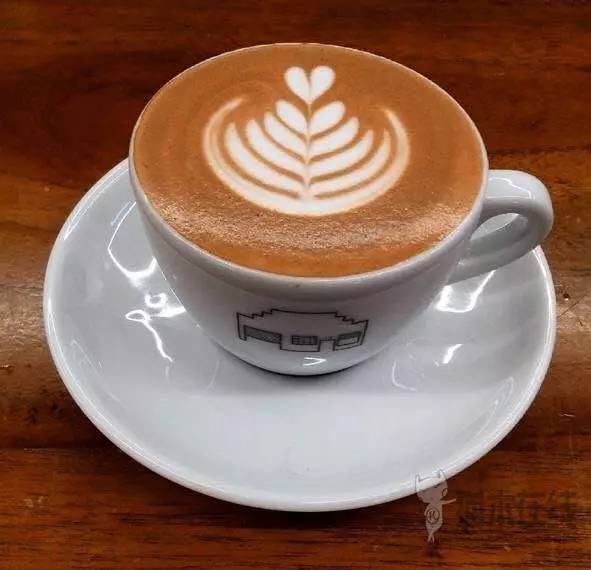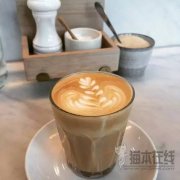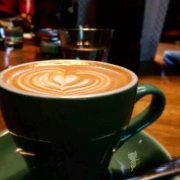Indika Hayangan Estate Single Bean Flavor Characteristics, Producing Areas and Brewing Parameters

For professional baristas, please follow the coffee workshop (Wechat official account cafe_style)
Flavor characteristics, producing areas and cooking parameters of single bean in Ganzhuang Garden in Kahayang, Indonesia
Another important feature of Indonesian local cafes that cannot be ignored is that coffee shop owners are proud to recommend local coffee. Even big brands like Starbucks in Indonesia still offer high-quality coffee from Sumatra locally to meet the needs of customers. This is another factor that Indonesians take into account the local quality of coffee. The owner of the coffee shop commented on this issue: "when the new shop opened in 2000, Indonesians did not know espresso. Since they tasted espresso from Italy from chain stores, when independent coffee shops or local chain stores continue to open, people see that Italian coffee is not the only one with good taste. Coffee shops carefully recommend local coffee to make coffee consumers understand." The local coffee also tastes as good as Italian coffee.
As Indonesian consumers become more aware of quality coffee, the number of special coffee shops increases, according to coffee owners: "in big cities like Jakarta, Surabaya, Bandung and Bali, special coffee shops are growing rapidly, which also shows that consumers know more about coffee, and coffee shopkeepers must choose high-quality coffee materials. The best marketing plan is to hold the hearts of customers with quality products.
The leap of the local coffee shop chain. In addition to the establishment of more and more independent coffee shops, Italian coffee has become more and more popular and has even become a competitor to American brands Starbucks and CoffeeBean (which currently has 31 stores), which has led to the continuous production of more local brands of coffee in recent years.
According to the statistics of the International Coffee Organization (ICO), excluding the domestic transactions of each coffee-producing country, about 65% of the coffee in circulation in the world market is Arabica and 35% is robusta. Arabica species are characterized by slender and flat granules. Robusta coffee beans are round and round. West Africa is the origin of Liberian coffee by its shape. It has strong adaptability to all kinds of environments, whether high or low temperature, damp or dry, but it is not resistant to leaf rust and its flavor is worse than Arabica. Therefore, it is only traded in some West African countries (Libya, C ô te d'Ivoire, etc.), or planted for research.
Arabica coffee beans grow in tropical colder high-altitude areas, and the hot and humid zone that is not suitable for Arabica coffee is where robusta coffee grows. Robusta has a unique aroma (called "Rob smell", which some people think is moldy) and bitterness, accounting for only 2% of mixed coffee. 3%, the whole cup of coffee becomes Robusta flavor.
People like to compare the robusta species to the Arabica species of coffee. In fact, the robusta species was originally a mutant of the Congolese species (scientific name Cofffea canephora), so it is the Congolese species that should be compared with the Arabica species. To this day, however, the name of the Robusta species is commonly used by the public, and it is regarded as the same species as the Congolese species. About 65% of the coffee in circulation in the world market is Arabica.
Its flavor is so bright and strong that if you want to taste it directly, you have to consider it. It is generally used in instant coffee (which extracts about twice as much liquid coffee as Arabica), bottled coffee, liquid coffee and other industrial coffee. The caffeine content is about 3.2 per cent, much higher than 1.5 per cent of Arabica, but if you add in the hybrids of Arabica and robusta-such as the variant Columbia (Variedad Colombia), which belongs to the main Colombian coffee variety, has 1/4 Robusta pedigree, and therefore resistant to leaf rust and high yield-and its mutations, the classification of secondary coffee beans will be more complicated. Some Arabica coffee beans are quite close to the native species, while others are quite similar to the Robusta species. Even if the coffee has the same name (named from the place of origin), as long as the cultivated varieties are different, the flavor is different from the leaf rust-resistant varieties found in the African Congo, teaching the Arabica species to be more resistant to the disease.
PTJavArabica, Indonesia: speaking of the store opening process, the general manager of the baking company said: "Caswell'sCoffee was established in 2001, which is close to the time Starbucks set up in Indonesia. In addition to six points of sale, it is also famous for providing bakers in five-star hotels, restaurants and coffee shops. At the same time, it also holds coffee knowledge training for staff and holds many baristas competitions."
Indonecia Indonesia
Population: 237424000
In Indonesia, coffee beans slowly grew from Java to neighboring islands, first to Sulawesi in 1750, but not to northern Indonesia at that time. Until 1888, when planting began around Lake Lake Toba, it eventually spread to Lake Lake Tawar in the Gayo region in 1924.
SUMATRA
Sumatra has three main growing areas: the northern part of Aceh, the slightly southward area around Lake Lake Toba, and the recent rise of islands near Mangkuraja. It may also be traced back to smaller areas of Takengon, Bener Mariah, Lintong, Sidikalang, Dolok Sanggul, and Seribu Dolok, which surrounds Lake Doba in Aceh. In the past, the coffee beans sold in this area were called "Sumatra Mantenin", but in fact there was no place name called Mantenin, which came from the ethnic names of the local islanders. Manning is usually divided into grades, classified as Grade1 or Grade2. There is no doubt that the grading method is to use the cup to test the quality rather than the raw bean itself. But I still have doubts about recommending Grade1 because the rating seems to be overdone. It is strange to divide different varieties into different batches, so most Sumatran coffee beans are mixed with unknown varieties. Sumatran coffee beans are exported through the port of Medan, but stagnated in the port for too long before export, hot and humid climate factors will not be conducive to the quality of coffee beans.
Altitude: 1100-1300m in Aceh, 1100-1600m in Lake Doba, 1100-1300m in Mangkuraja
Harvest: September-December
Varieties: Typica (including Bergandal, Sidikalang, Djember), Timtim, Ateng, Onan Gajang
JAVA
In Indonesia, this area inherits Dutch colonization and habits, so there are more large coffee estates. The four main coffee fields, covering 4000 hectares, were formerly government estates. At that time, the coffee beans in this region enjoyed a first-class reputation, although I believe that not long ago, a large number of formula beans have been replaced by other coffee beans "Mocha-Java". Java coffee beans have been high for a long time, but there have been significant price reductions in the 20th century. The planting area covers the east side of Java around the Ijan volcano, as well as the west side.
Altitude: 900-1800m
Harvest: September-September
Variety: Typicas, Ateng, USDA
SULAWESI
Even though seven major estates supply about 5% of Sulawesi's production, local production is dominated by the supply of small farmers. Most Arabica beans are grown high around Tana Toraja, while Kalosi in the south becomes a brand, and there are two less well-known areas: Gowa, west of Mamasa and south of Kalosi. A small number of particularly interesting coffee beans are washed with water, which is worth thinking about, and it is highly recommended to try it when you have the opportunity. Semi-washing treatment is a common method in Sulawesi, and the local area also produces a lot of Rob beans.
Altitude: Tana Toraja 1100-1800m Mamasa 1300-1700m average 850m
Harvest: may-November
Variety: S795, Typicas, Ateng
FLORES
Flores is a small island about 320km (200miles) east of Bali and is located in one of the Indonesian archipelago. As a latecomer to the coffee industry, it has also developed a good reputation for growing coffee. In the past, it was common to see that a large part of Flores's coffee was sold domestically or mixed with other coffee exports, rarely sold directly in the name of "Flores Coffee". There are active and dormant volcanoes on the island, and the mixture of Bajawa volcanoes has a great positive impact on the main planting areas. In terms of coffee processing, the semi-washing process is the most common treatment in the region, and some coffee beans are still produced by full-water treatment.
Altitude: Tana Toraja 1200-1800m Mamasa 1300-1700m average 850m
Harvest: may-September
Variety: Typicas, Ateng, Robusta
BALI
Coffee arrived late in Bali and was originally grown on the Kintamani plateau. Coffee production was deeply affected by the eruption of Gunung Agung in 1963, killing more than 20, 000 people and extensively destroying the eastern part of Bali. In the late 1970s and early 1980s, the government distributed Arabica bean seedlings to boost coffee production, but some thought the effect was limited because about 80% of the island's production today is robusta beans. Although tourism provides the largest income, agriculture employs the most people on the island, while Japan used to be the biggest buyer.
Altitude: 1250-1700m
Harvest: may-October
Variety: Typicas, Typica derivatives, Robusta
ExcelsoCoffee: a chain of coffee shops that integrates planting, production, export and sales equipment, has now opened 19 branches and has become a very popular local coffee chain among Indonesians.
BengawanSoloCoffee: there are 37 branches, starting with IpengWi-djojo 's obsession with coffee taste, focusing on choosing high-quality local ingredients and roasting their own coffee, making a well-known coffee shop as popular as a foreign coffee chain.
CoffeeToffee:2006 launched a local new chain store in Surabaya at the end of the year. With its love of espresso, CoffeeToffee has expanded to more than 100 branches over a period of four years.
The fact that national coffee exports are used as capital at the world-class level makes Indonesians more interested in entering the coffee industry, whether it is roasting coffee, opening coffee shops, or opening shop consultations. as a result, the growth of domestic coffee consumption is not just in terms of the number of products. In order to encourage better development of quality coffee, the coffee business still requires consumers to understand and accept more about the development of coffee cultivation knowledge promotion and development of high quality coffee in Indonesia. The President of the Indonesian Special Coffee Association (SCAI) gave a brief overview of the export coffee business.
"Indonesia's total exports grew by an average of 50-20% a year from 2000 to 2009, until it became the third largest coffee manufacturer in the world. Robasta coffee accounted for about 70% of the total export volume. Because the Dutch growers who first grew coffee did not fully understand Arabica coffee, coffee production was low and a lot of coffee was aborted. Farmers returned to grow robastian coffee, which is suitable for climate and resistant to disease. later, farmers learned the corresponding knowledge and set up organizations to promote Arabica coffee cultivation, which increased farmers' confidence in growing high-quality coffee. This is also the demand of the growing market. In 2010, the main obstacle to coffee exports was that Indonesia faced longer and heavier rainfall than the normal rainy season, resulting in reduced production. But there is also a demand for coffee from all over the world. This means that Indonesian coffee is being demanded by more and more people, and is becoming more and more high-quality and international. Coffee shops and popular Italian coffee can be said that the coffee market in Indonesia is like many ASEAN countries, the domestic market and independent coffee shops will begin to develop from American giants to enter the market. This important phenomenon has changed the perception of coffee related to life and encouraged local enterprises to open their own cafes. The coffee shop owner expressed the popular view of Italian coffee: "at present, Indonesian coffee, especially in big cities is developing, the market is growing, and consumers are beginning to know more about coffee." Independent stores and coffee chains have set up a lot and have been growing in the past 4-5 years, and I believe the coffee business will continue to grow in the next 5 years. These stores have increased coffee production and consumption in Indonesia and led to the creation of more local cafes.
"
Important Notice :
前街咖啡 FrontStreet Coffee has moved to new addredd:
FrontStreet Coffee Address: 315,Donghua East Road,GuangZhou
Tel:020 38364473
- Prev

Differences, distinctions and awards of single beans in Ganzhuang Garden in Kahayang, Indonesia
For the exchange of professional baristas, please pay attention to the coffee workshop (Wechat official account cafe_style). According to the statistics of the International Coffee Organization (ICO), excluding the domestic transactions in each coffee-producing country, about 65% of the coffee in circulation in the world market is Arabica and 35% is Robusta. The Arabica species is characterized by a
- Next

Grading, price, raw bean and baking curve of single bean in Kahayang Ganzhuang Garden, Indonesia
For the exchange of professional baristas, please follow the coffee workshop (Wechat official account cafe_style) Indonesia Kahayanggan Garden single bean grading, price, raw beans and baking curve increased by an average of 50-20% per year from 2000 to 2009, until it became the third largest coffee manufacturer in the world. Robasta coffee accounts for about 70% of the total exports, because it was first planted.
Related
- Does Rose Summer choose Blue, Green or Red? Detailed explanation of Rose Summer Coffee plots and Classification in Panamanian Jade Manor
- What is the difference between the origin, producing area, processing plant, cooperative and manor of coffee beans?
- How fine does the espresso powder fit? how to grind the espresso?
- Sca coffee roasting degree color card coffee roasting degree 8 roasting color values what do you mean?
- The practice of lattes: how to make lattes at home
- Introduction to Indonesian Fine Coffee beans-- Java Coffee producing area of Indonesian Arabica Coffee
- How much will the flavor of light and medium roasted rose summer be expressed? What baking level is rose summer suitable for?
- Introduction to the characteristics of washing, sun-drying or wet-planing coffee commonly used in Mantenin, Indonesia
- Price characteristics of Arabica Coffee Bean Starbucks introduction to Manning Coffee Bean Taste producing area Variety Manor
- What is the authentic Yega flavor? What are the flavor characteristics of the really excellent Yejasuffi coffee beans?

